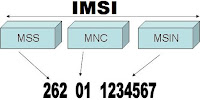How to Fix the Unknown Message Not Found Error on iPhone
Getting a 'message not found' error text from an unknown number on an iPhone can sometimes happen once or numerous times over several hours. The 'unknown message not found' iPhone error almost always appears as an actual text message and not as a system error or alert, but it can still be frustrating and confusing, especially when you get a lot of them. Here's what causes these errors and how to fix them.
:max_bytes(150000):strip_icc():format(webp)/how-to-fix-the-unknown-message-not-found-on-iphone-error-849e332f4e9241db9cb80ef9ddb63e01.jpg)
Cause of Unknown Address Message Not Found Errors
The 'unknown address message not found' texts are often not a major problem to worry about and aren’t a sign that your iPhone is damaged or dying. These messages are usually caused by a small software glitch in the iMessage or FaceTime apps, a weak Wi-Fi or cellular signal, or a minor disconnect between your device and your network provider.
:max_bytes(150000):strip_icc():format(webp)/how-to-fix-the-unknown-message-not-found-on-iphone-error-849e332f4e9241db9cb80ef9ddb63e01.jpg)
Cause of Unknown Address Message Not Found Errors
The 'unknown address message not found' texts are often not a major problem to worry about and aren’t a sign that your iPhone is damaged or dying. These messages are usually caused by a small software glitch in the iMessage or FaceTime apps, a weak Wi-Fi or cellular signal, or a minor disconnect between your device and your network provider.














